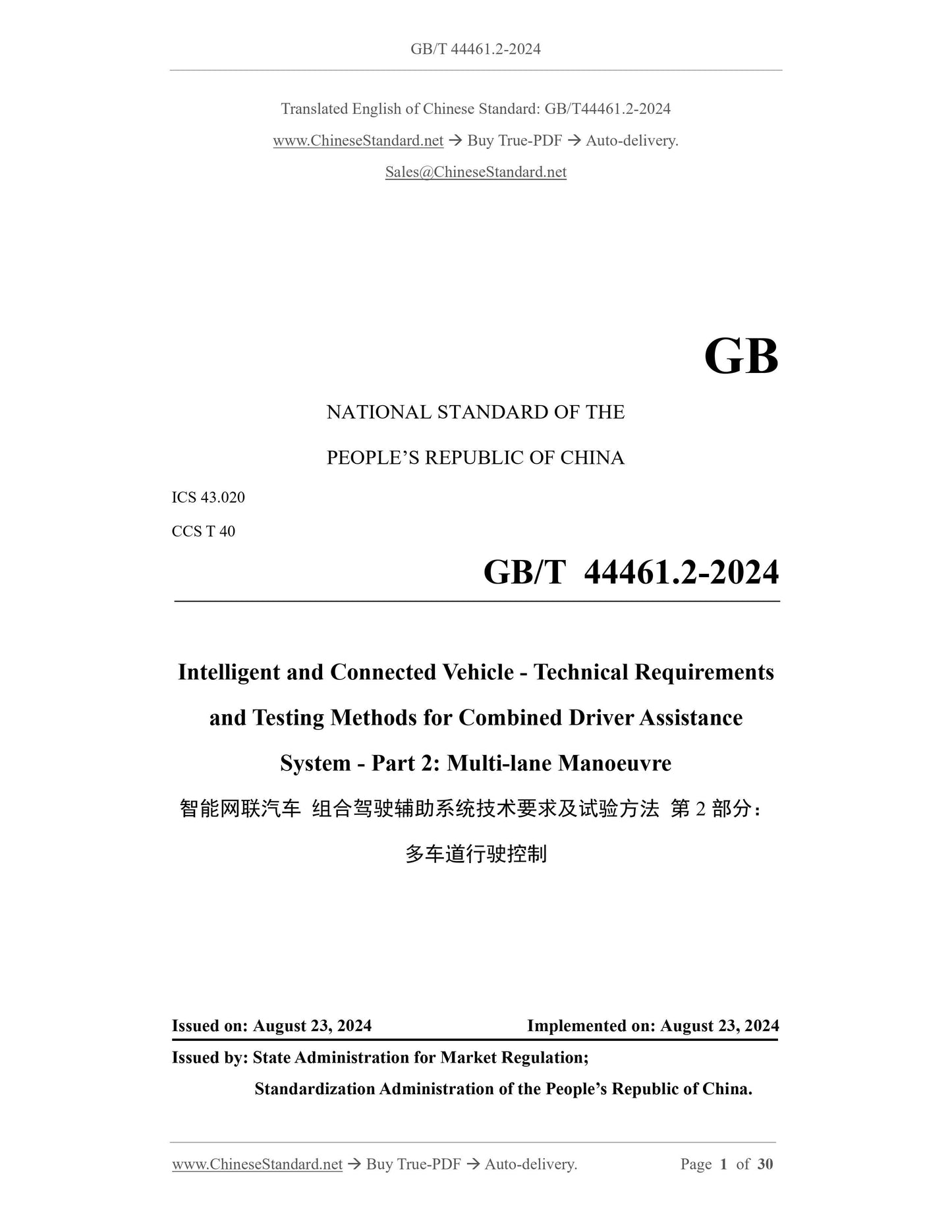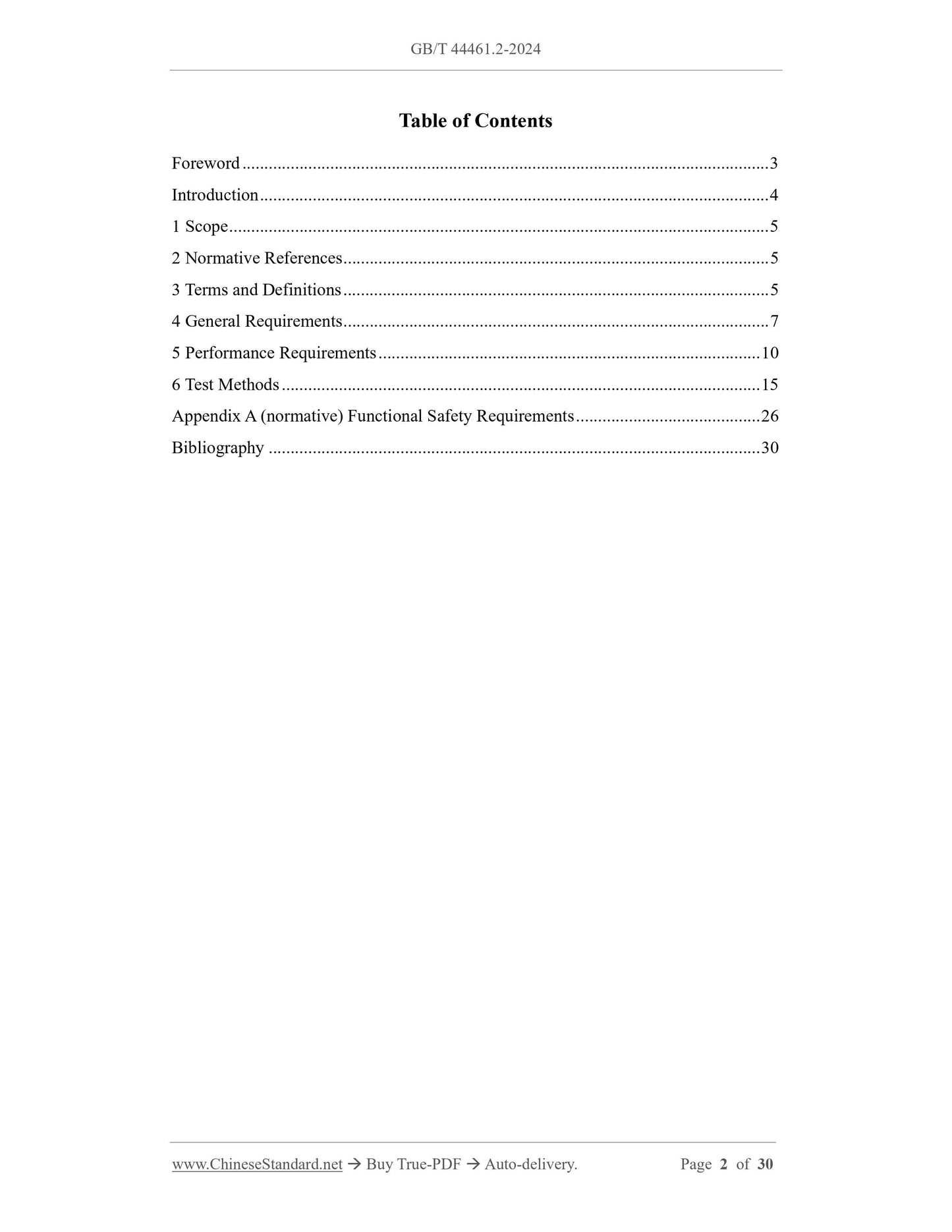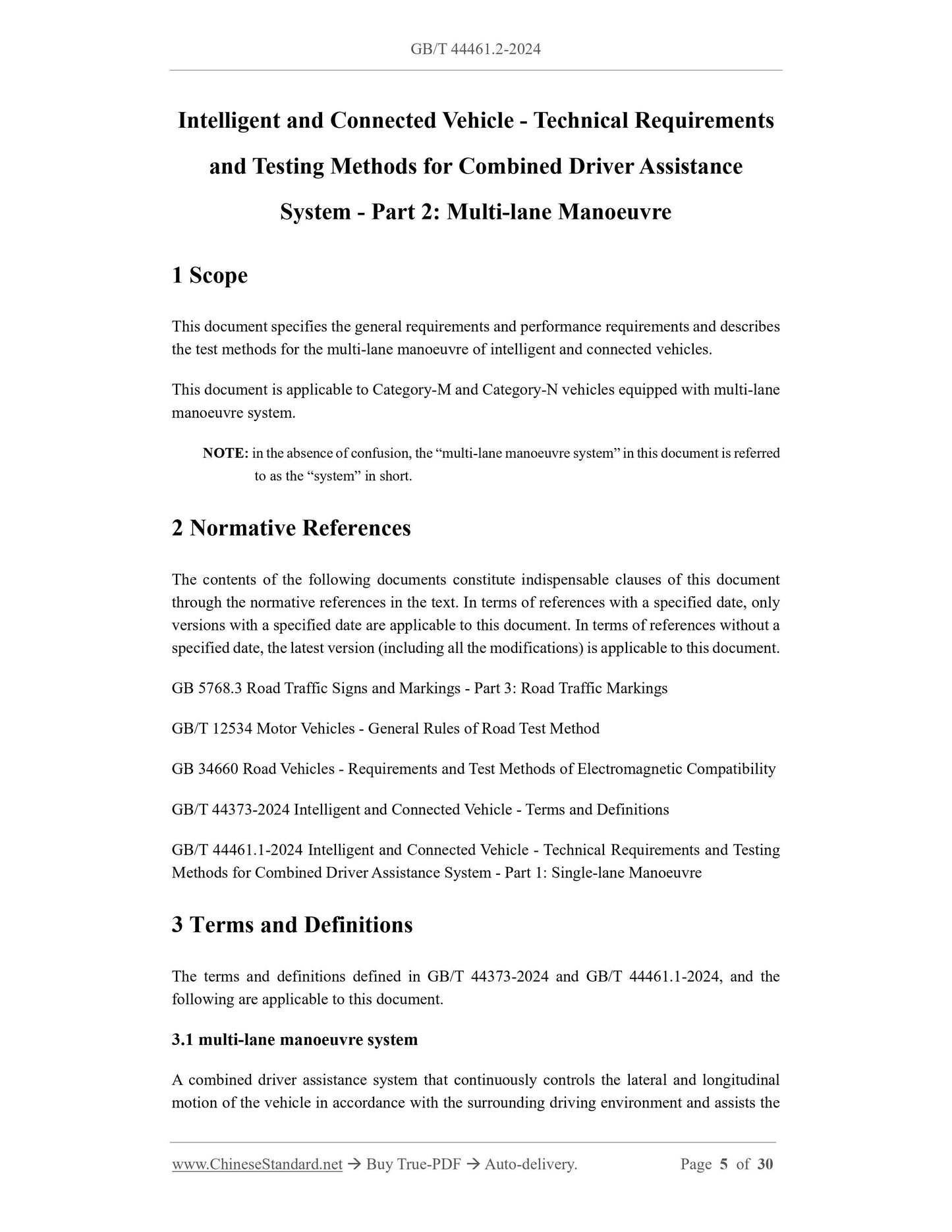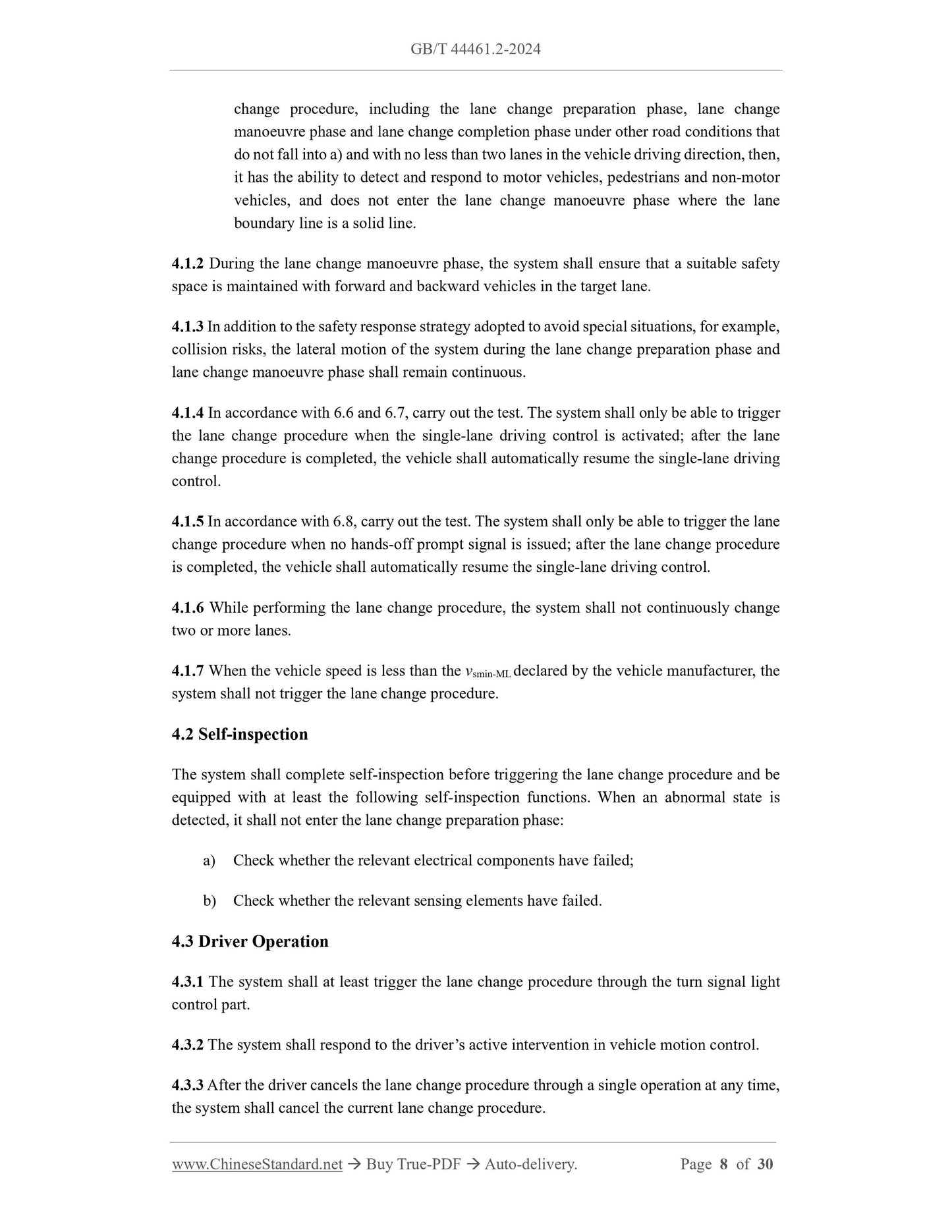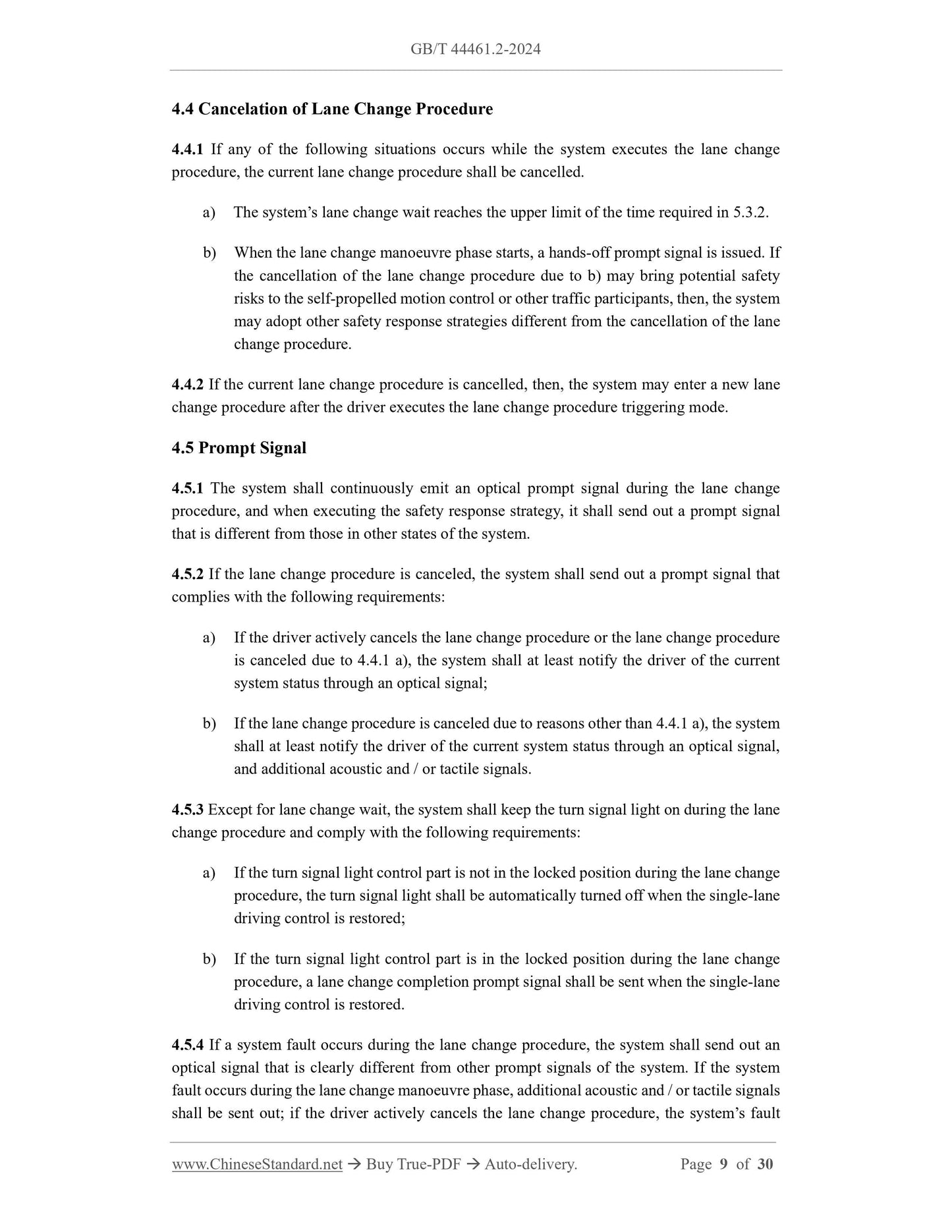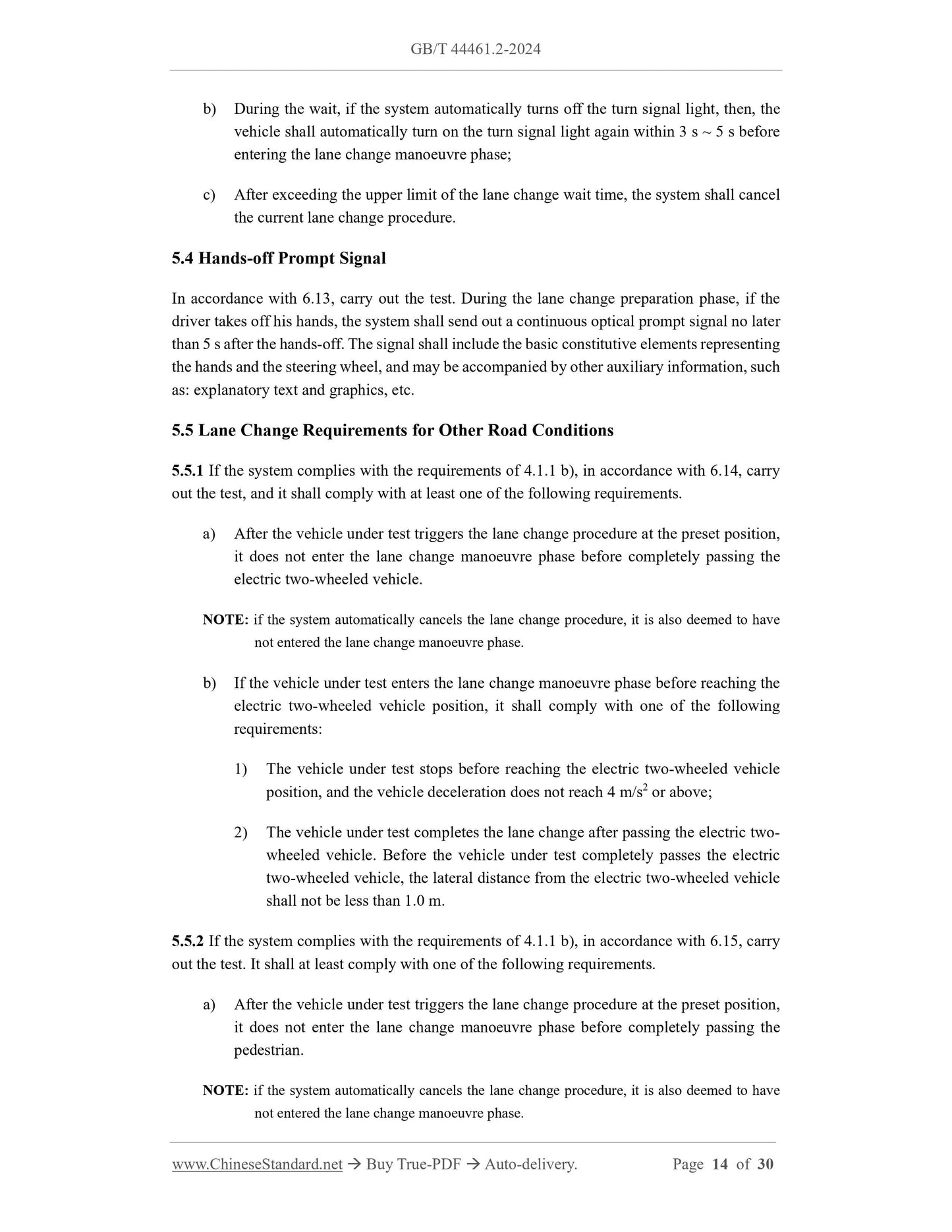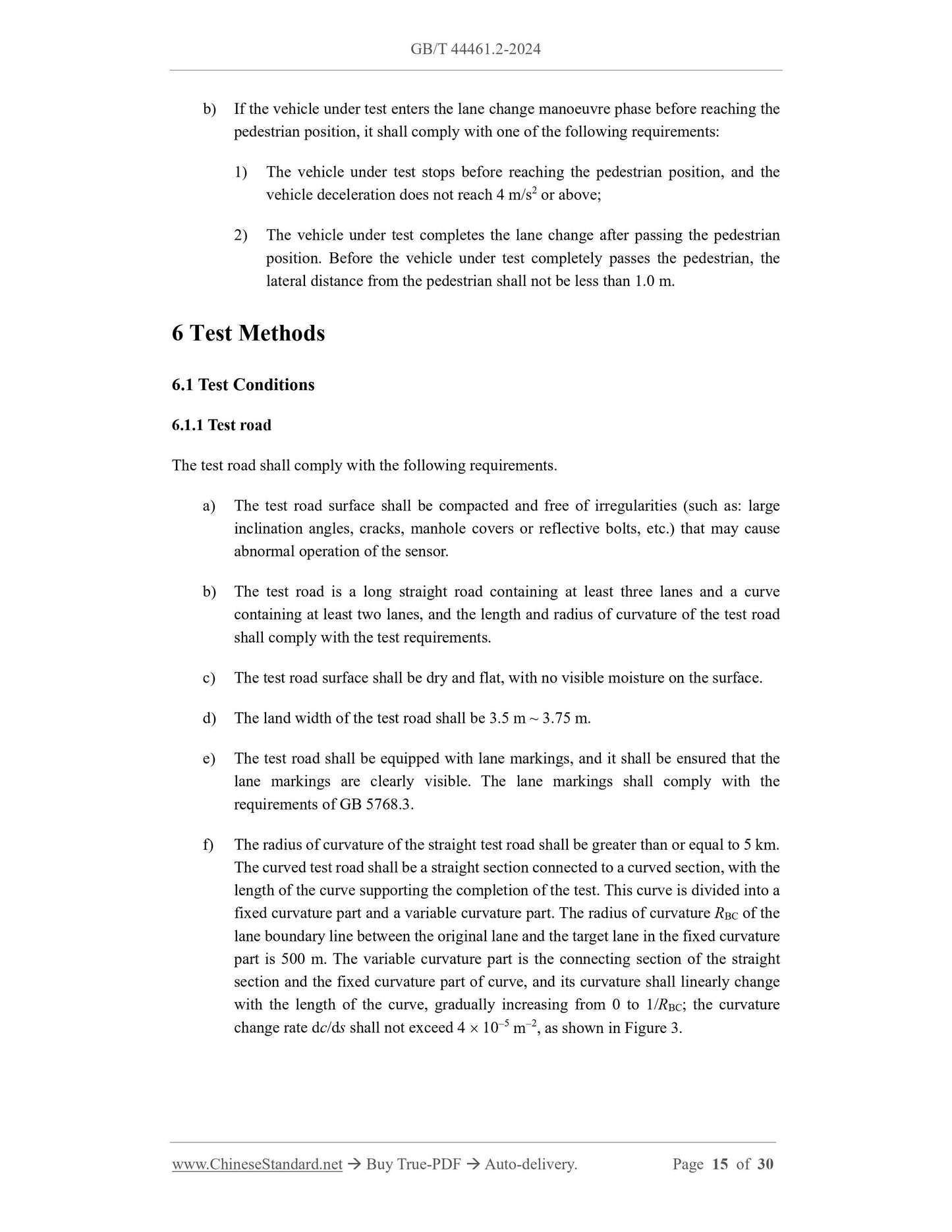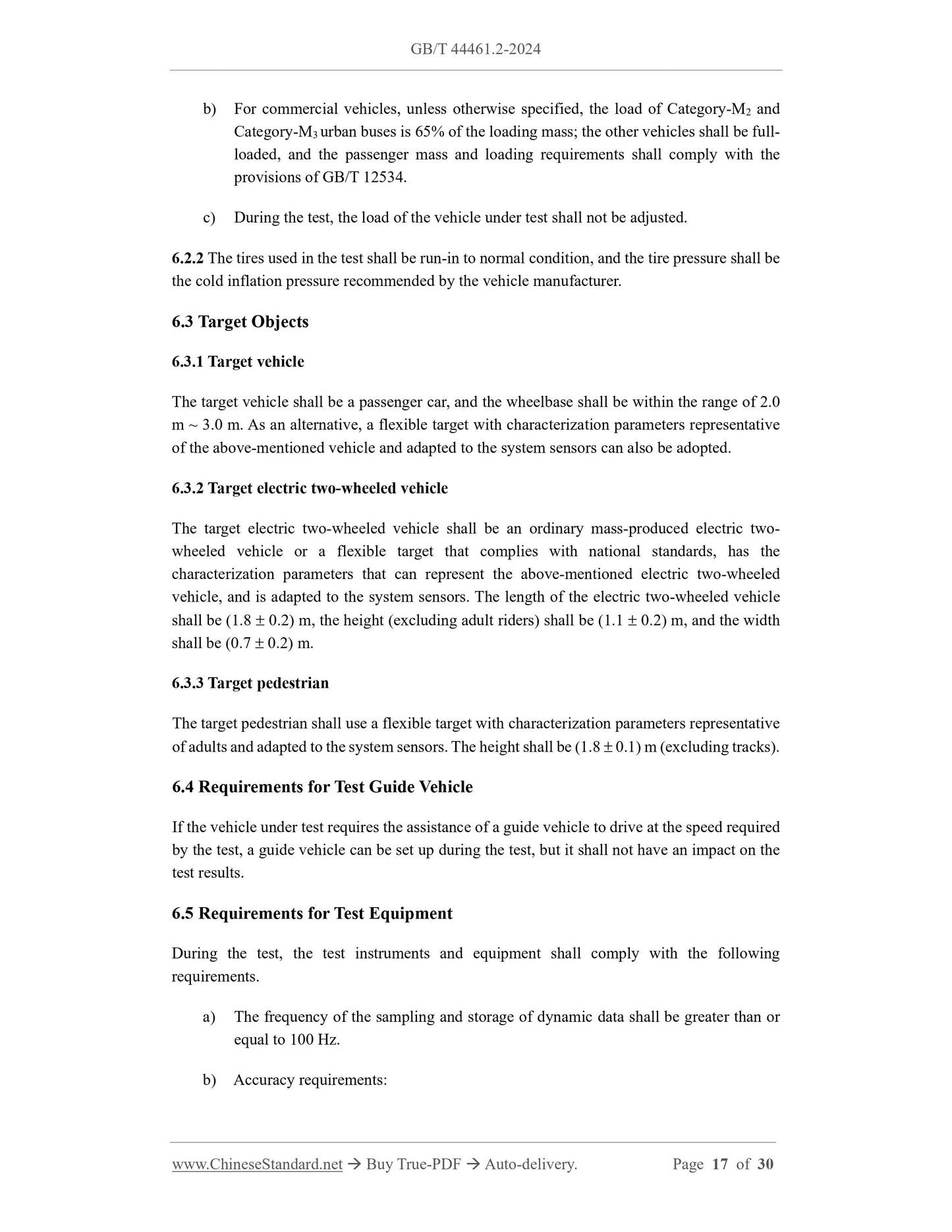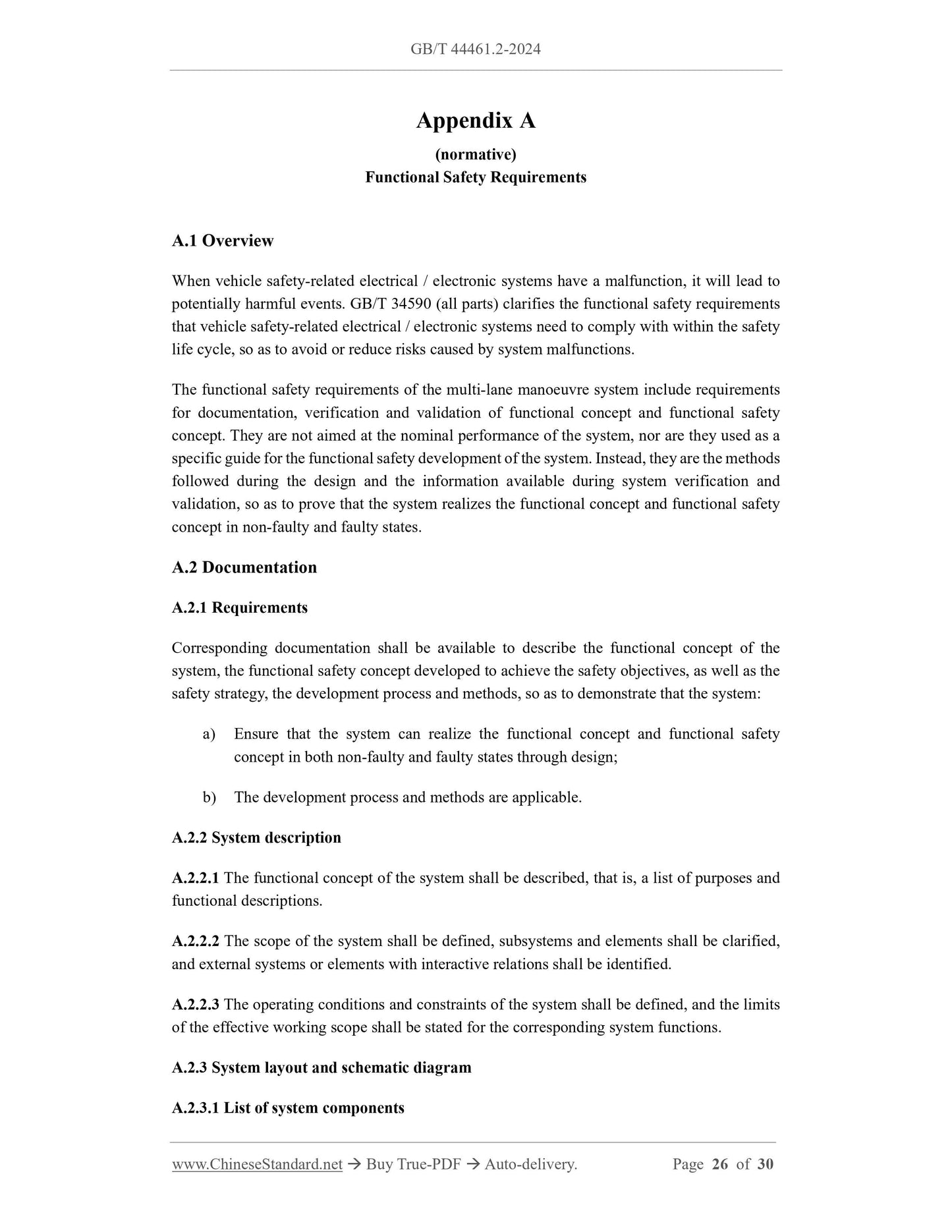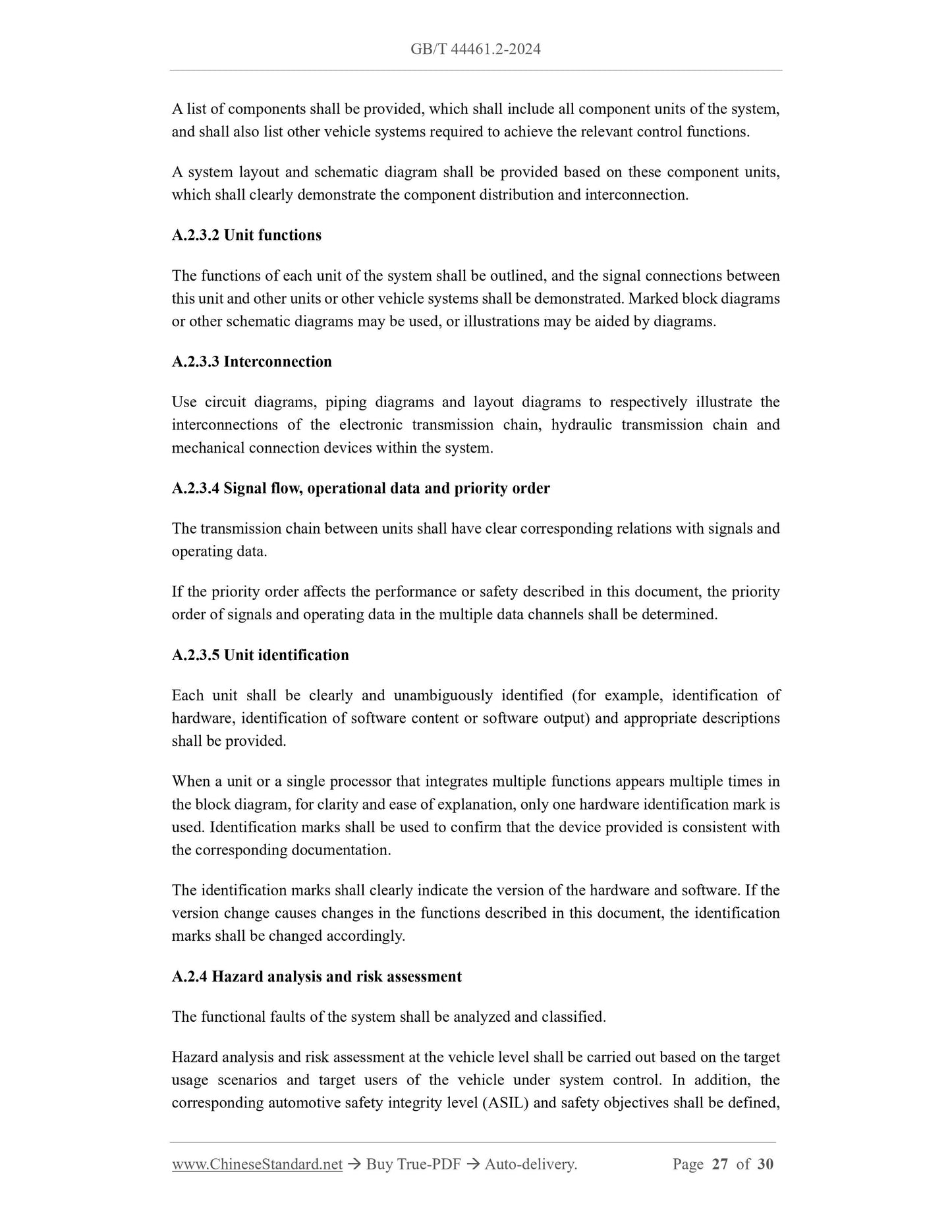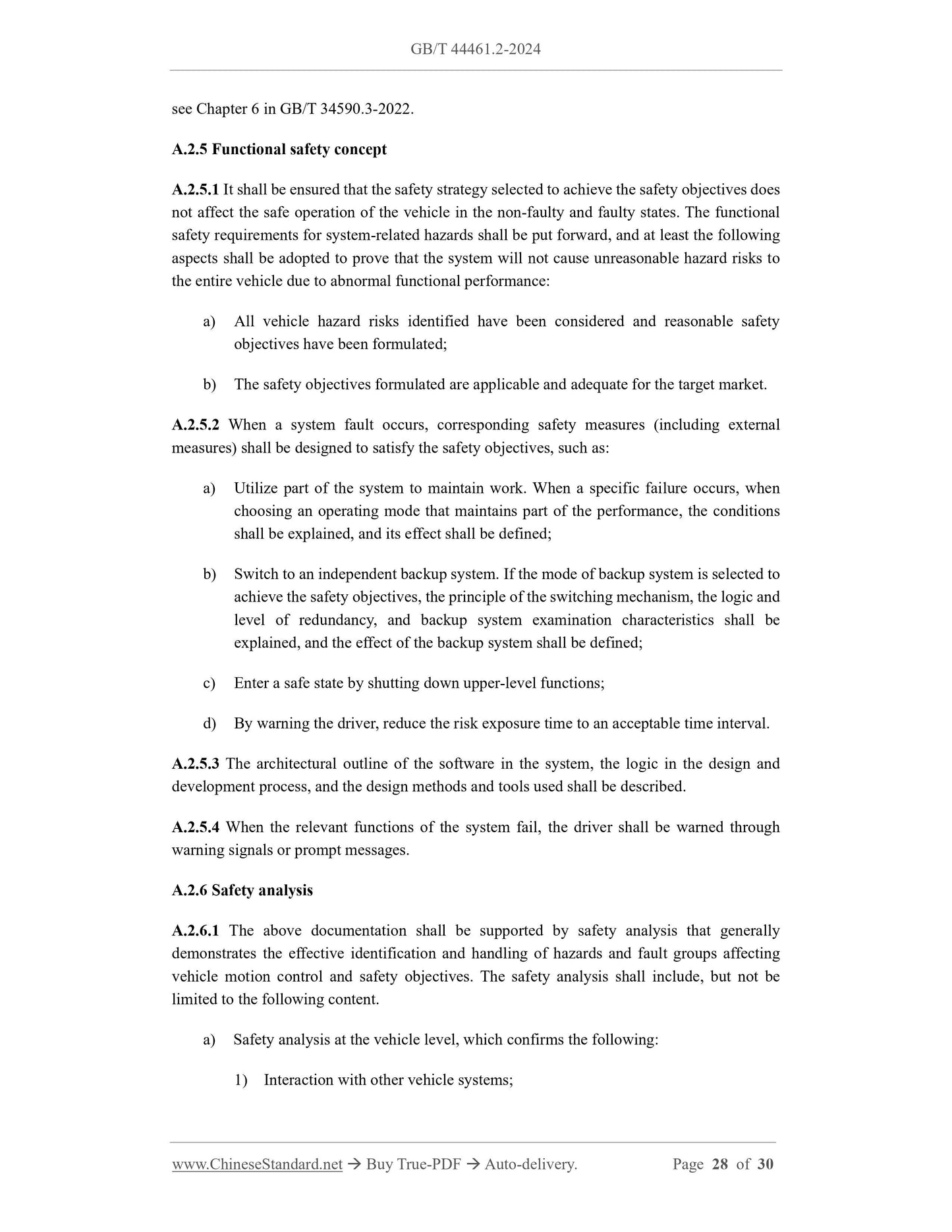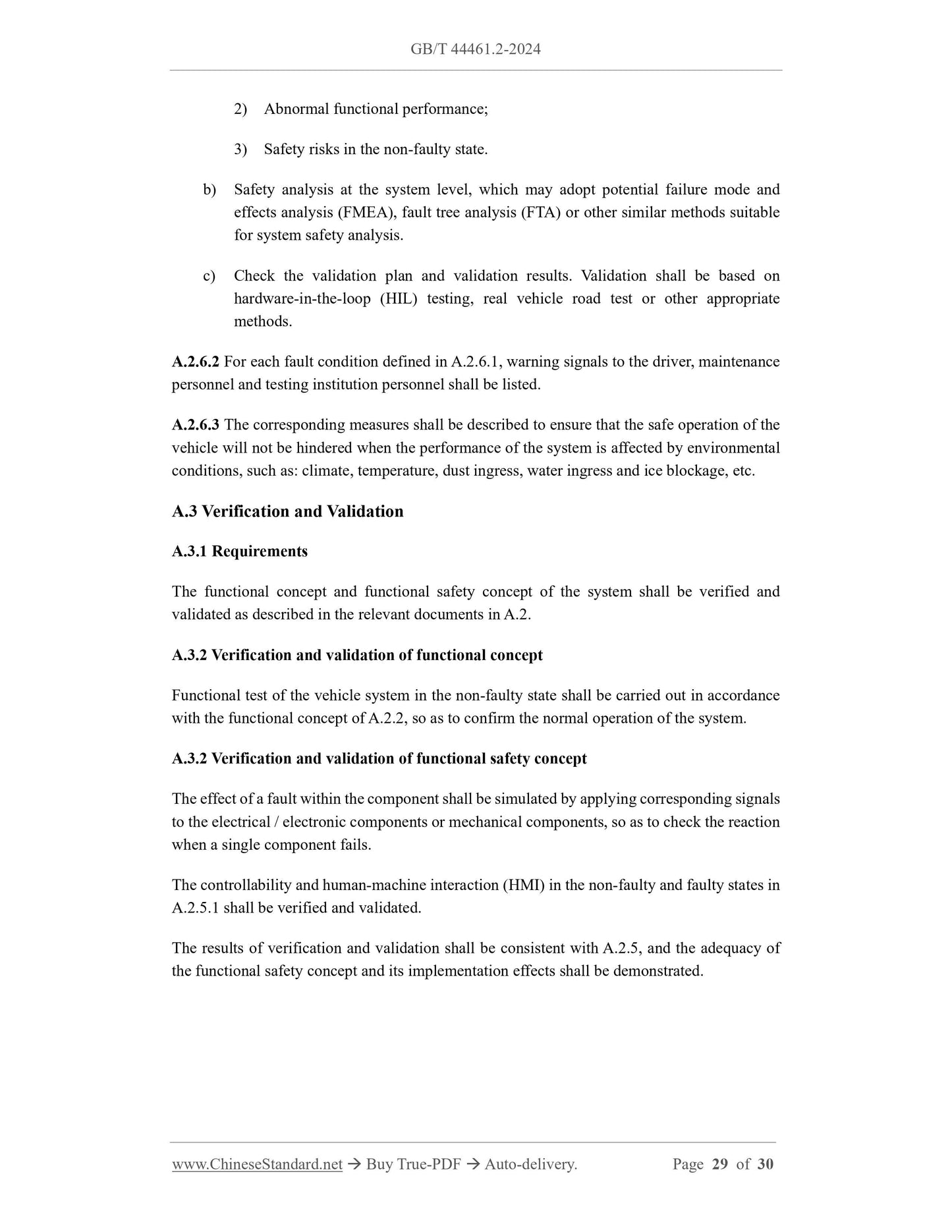1
/
of
12
www.ChineseStandard.us -- Field Test Asia Pte. Ltd.
GB/T 44461.2-2024 English PDF (GB/T44461.2-2024)
GB/T 44461.2-2024 English PDF (GB/T44461.2-2024)
Regular price
$440.00
Regular price
Sale price
$440.00
Unit price
/
per
Shipping calculated at checkout.
Couldn't load pickup availability
GB/T 44461.2-2024: Intelligent and connected vehicle - Technical requirements and testing methods for combined driver assistance system - Part 2: Multi-lane maneuvre
Delivery: 9 seconds. Download (and Email) true-PDF + Invoice.Get Quotation: Click GB/T 44461.2-2024 (Self-service in 1-minute)
Newer / historical versions: GB/T 44461.2-2024
Preview True-PDF
Scope
This document specifies the general requirements and performance requirements and describesthe test methods for the multi-lane manoeuvre of intelligent and connected vehicles.
This document is applicable to Category-M and Category-N vehicles equipped with multi-lane
manoeuvre system.
NOTE. in the absence of confusion, the “multi-lane manoeuvre system” in this document is referred
to as the “system” in short.
Basic Data
| Standard ID | GB/T 44461.2-2024 (GB/T44461.2-2024) |
| Description (Translated English) | Intelligent and connected vehicle - Technical requirements and testing methods for combined driver assistance system - Part 2: Multi-lane maneuvre |
| Sector / Industry | National Standard (Recommended) |
| Classification of Chinese Standard | T40 |
| Classification of International Standard | 43.020 |
| Word Count Estimation | 23,255 |
| Date of Issue | 2024-08-23 |
| Date of Implementation | 2024-08-23 |
| Issuing agency(ies) | State Administration for Market Regulation, China National Standardization Administration |
Share
